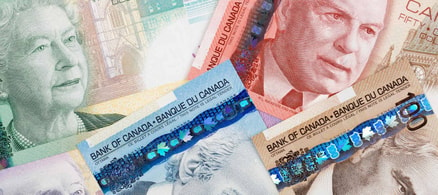Embrace the side hustle
People often ask me how I came up with a down payment of $170K on a modest full-time salary, and a big part of the answer is that I worked extra hours outside my primary job.
I know, it’s hard to find the motivation to work extra hours after you get home from a long day at your main gig. But it’s easier if the time is spent doing something that you genuinely enjoy. When considering side hustles, I recommend looking for something that you’re passionate about. If you’re into photography, what’s stopping you from becoming a wedding photographer on weekends? If you like to cook, you might consider moonlighting for a catering company. A side hustle can be both a way to generate some extra money and an outlet for an activity you enjoy, but don’t get to do a lot of in your ‘day job.’
My personal passion is, not surprisingly, writing. By writing in my spare evenings and weekends, I was able to practically double my income from what was my full-time job as a senior pension analyst. This enabled me to save up my full down payment and pay off my mortgage in only three years.
Increase your salary
If your regular full-time job takes up all your time and energy, and the mere idea of a side hustle gives you a headache, try to increase your income where you’re already working. When you go in for your annual performance review at work, take it seriously and prepare for it. List your accomplishments and the reasons why you believe you’re deserving of a pay raise or promotion. This extra bit of groundwork and self advocacy has worked wonders for me throughout my career, and my corporate salary absolutely would not have been where it was when I was saving for a house if I hadn’t convincingly argued my case for why I deserved a raise.
Also, keep your eye on the employment market. Don’t be afraid to make the move if you see a better opportunity elsewhere and you’re not getting the salary love you deserve at your current job.
Cut your expenses
Take a look at your top three spending categories—likely rent, transportation and food—and start to cut, cut, cut.
If your rent is too high and it’s keeping you from saving a down payment, consider “creative” living arrangements. For example, when I was saving up my down payment, I lived at home and paid my mother $600 per month in rent. If your parents are extra nice, they might charge you a nominal amount for room and board or let you live at home for free.
In terms of transportation, do you really need a vehicle? I lived near the subway line, and was able to get by without a car. I estimate I’ve saved over $5K a year by going car-free. If owning a vehicle is a must for your family, try to save money where you can by shopping around for auto insurance. Consider buying a 2-3 year old used car from a registered car dealer. Living with a partner? Try to get by on one car instead of two.
As for food, cutting $15 to $20 on each and every grocery trip adds up quickly. So try to buy primarily generic brands, and buy on sale. You can also embrace one or more of the many grocery apps out there that identify local sales and organize your coupons. Paying with a credit card that earns extra cash back on groceries is yet another easy means of cutting down expenditures in this line of your budget.
Wipe out your debt
It’s great that you’re excited to save up for a down payment. But start saving from a clean slate: Clear up any consumer debt you may have, especially high-interest debt, before you devote financial resources to saving. It doesn’t make sense to save for a down payment when you’re paying 19% or more in credit card interest.
There are a number of strategies you can employ to pay off lingering debt quickly, including the use of a balance transfer card or a consolidation loan. After you’ve cleared up your consumer debt you can get completely gung-ho on buying a home.
Make a spending-income-savings contract with yourself
You’re more likely to achieve your financial goals if they’re defined in writing. When I was dreaming about homeownership I wrote a contract to myself stating that I’d come up with a down payment of $170K in three years. And guess what? The binding, galvanizing nature of the contract worked!
A contract between you and you might sound silly, but it adds an extra level of actuality to your dreams. Be sure to include goals for the below in the contract:
- Expense limits
- Income goals
- Debt reduction timeline (if relevant)
- Weekly/monthly/yearly amounts you want to save
I was a single guy planning on buying a house on my own. If you’re planning to buy a home with your partner, then the contract should be between both of you.
Pay yourself first with automated savings
Ok, so you’ve made room in your budget by cutting your expenses, increasing your income, and axing your debt. Now it’s time to follow through on all your hard work by paying yourself. “Paying yourself first” means making your savings your number one priority instead of treating it as your last priority.
For example, let’s say you want to save a $39K down payment for a $500K condo in Toronto. $39K is a lot of dough to come up with at once! However, by paying yourself first and setting it up so money from each paycheque is automatically deposited into your savings account, you’ll have less temptation to spend.
In the above example, if you saved $250 per week, in three years you’d have a down payment of $39K. And that’s without factoring in interest. But you can supercharge your savings by carefully choosing where you’ll put your money and allowing it to collect major interest.
High-interest savings accounts
A high-interest savings account was the go-to destination for my money when saving toward my down payment. As I recommended above, I set up the savings account so that a certain amount of money was automatically garnished from each paycheque and transferred straight to savings.
As the name implies, high-interest savings accounts offer interest rates higher than you’d otherwise be able to find with a regular savings account. When shopping for the right savings account, you can do a back-of-the-envelope calculation to determine if an account’s interest rate is high enough for you to still make money after taxes and inflation are taken into account.
For simplicity’s sake, let’s assume that the inflation rate is about 2% and your tax rate is about 33%. In this case, you’d have to earn at least 3% on your savings account to break even. (Of course, if you’re holding your high-interest savings account inside your tax-free savings account, you wouldn’t have to account for taxes. In that case you’d only have to earn 2% in interest to break even. We’ll go over the tax-free savings account later in more detail.)
GICs
For the interest hungry, a good alternative to the high-interest savings account is a Guaranteed Income Certificate (or GIC). With a GIC, you have the option of choosing how long you’d like to lock your money in without cashing it out (anywhere from 90 days to 10 years), with longer terms yielding higher interest rates.
The high interest rates offered by GICs may be tempting, but be cognizant of the fact that these interest rates may be voided or reduced if you cash out the GIC before the end of its term. So if your GIC’s term is 5 years and you end up saving enough for your down payment in 3, you might be stuck in a dilemma of either forfeiting the interest you’ve earned in the GIC or postponing the down payment on the house. High-interest savings accounts typically offers more flexibility with less penalty in the event that you want to withdraw your savings early to make that down payment.
RRSP home buyers’ plan
Are you a first-time homebuyer? Then you’ll want to take advantage of the Home Buyers’ Plan (HBP). Under the HBP, you can withdraw up to $25K tax-free from your Registered Retirement Savings Plan (RRSP) toward the down payment on a home. If you’re buying a home with a partner, that’s a total of $50K you can borrow under the HBP.
It’s important to recognize that the RRSP isn’t an investment like a stock or bond. Rather, it’s a tax-sheltered account that can hold a variety of investments, including high-interest savings accounts and GICs. You can contribute the lesser of 18 percent of your earned income from the prior year or the current year’s RRSP limit, whichever is less, to your RRSP.
If you decide to borrow money under the HBP, be sure to follow the rules carefully. Any money that you borrow must be repaid in 15 years, with the repayments starting in the second year. Failing to repay any amount means that it will be added back to your income as taxable, and you’ll lose the RRSP room forever. Ouch!
For even more tips and information on buying your first home, check out our first-time homebuyer’s guide.
Tax-free savings account (TFSA)
If you’re not a first-time homebuyer or you’ve maximized the HBP, then the Tax-Free Savings Account (TFSA) is your next best bet. The TFSA works a lot like the RRSP. You can hold high-interest savings accounts and GICs inside, making it ideal for long-term savings goals like saving money for a house.
One key difference between the TFSA and the RRSP is that unlike the RRSP, you don’t get a tax refund up front when you contribute to the TFSA. But the TFSA has a leg up on the RRSP because you don’t have to pay any withholding taxes when you withdraw money (hence the “tax-free” part).
When I was saving up my down payment, I used my RRSP and TFSA in tandem. If you’re planning to save more than $25K toward a down payment and you’re a first-time homebuyer, you might consider doing the same.
Next steps
Once you’ve saved up enough for your down payment and found the home of your dreams, it’s time to start thinking about a will. As soon as you have any assets, you should get one to protect your property in the event that something happens to you.
If you don’t already have a legal will, consider using Willful, a leading Canadian website that will help you create a customized will from start to finish. The process takes about 20 minutes, doesn’t require an expensive lawyer or notary, and will cost you as little as $99.
Plus, we’ve got an exclusive offer for our readers: Sign up for Willful using our exclusive link and get 10% off any Willful plan!





